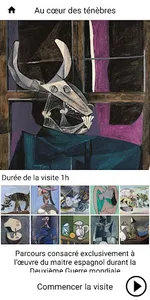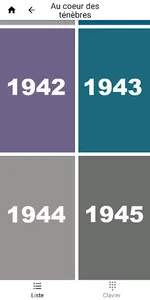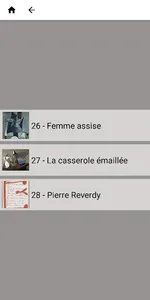The exhibition PICASSO In the heart of darkness unfolds in 16 rooms. Comprising more than 130 works and about 60 archival documents, it traces the life and work of Picasso from his exile to Royan in 1939 to his installation in the workshop of the Grands-Augustins from 1940 to 1945. The war does not diminish the creativity of Picasso who tirelessly painted the war without ever representing it literally. The exhibition offers a real dive into the heart of these years of occupation (friendships, literary collaborations, historical events), which are for the artist both a period of internal exile and a laboratory of new forms.
Thus, a few months before the declaration of war, September 3, 1939, to those who follow the victory of May 8, 1945, the exhibition retraces, month after month, the activity of the man and the artist during those painful years. The violence of the world is then reflected in his work by a fierce style with ferocious deformations, but the power of life of the creation feeds yet a hope that concretizes the Man with the sheep, symbol of artistic resistance vis-a-vis the occupant.
The chronological itinerary leads from last year to Royan, which corresponds to the episode of the "funny war", to the establishment in Paris during the occupation, in the workshop of the rue des Grands-Augustins , focusing on the key artistic milestones of this period whose two summits are undoubtedly L'Aubade (1942) and L'Homme au mouton (1944). During these years, faithful to his obsession for the female figure, Dora Maar being still for some time the main incarnation, Picasso keeps returning to the themes of the portrait and the nude, in the most diverse forms, with subjects such as the woman in the hat, the woman sitting in an armchair, or the woman who is combing her hair. Still life is another of his favorite motives and most often appears as an allegory of indigence, in times when food is scarce and rationed.
Finally, more explicitly, through the representation of skulls of animals but also skulls, Picasso translates, with an authentic sense of the tragic that is not without recalling its Spanish roots, the drama of those dark years and a dull violence.
In fact, during those years of war, if Picasso never took part in the resistance, or translated - with the exception of Guernica - the dramas that are played around him, by his persistence to continue his work, without compromising never - when he is classified as a "degenerate artist" by the Nazis and is attacked by some collaborating artists - asserts a form of humanist resistance to the oppressor and, in the midst of darkness, discloses by his art kneaded with an inextinguishable vital energy a message of hope.
Thus, a few months before the declaration of war, September 3, 1939, to those who follow the victory of May 8, 1945, the exhibition retraces, month after month, the activity of the man and the artist during those painful years. The violence of the world is then reflected in his work by a fierce style with ferocious deformations, but the power of life of the creation feeds yet a hope that concretizes the Man with the sheep, symbol of artistic resistance vis-a-vis the occupant.
The chronological itinerary leads from last year to Royan, which corresponds to the episode of the "funny war", to the establishment in Paris during the occupation, in the workshop of the rue des Grands-Augustins , focusing on the key artistic milestones of this period whose two summits are undoubtedly L'Aubade (1942) and L'Homme au mouton (1944). During these years, faithful to his obsession for the female figure, Dora Maar being still for some time the main incarnation, Picasso keeps returning to the themes of the portrait and the nude, in the most diverse forms, with subjects such as the woman in the hat, the woman sitting in an armchair, or the woman who is combing her hair. Still life is another of his favorite motives and most often appears as an allegory of indigence, in times when food is scarce and rationed.
Finally, more explicitly, through the representation of skulls of animals but also skulls, Picasso translates, with an authentic sense of the tragic that is not without recalling its Spanish roots, the drama of those dark years and a dull violence.
In fact, during those years of war, if Picasso never took part in the resistance, or translated - with the exception of Guernica - the dramas that are played around him, by his persistence to continue his work, without compromising never - when he is classified as a "degenerate artist" by the Nazis and is attacked by some collaborating artists - asserts a form of humanist resistance to the oppressor and, in the midst of darkness, discloses by his art kneaded with an inextinguishable vital energy a message of hope.
Show More







